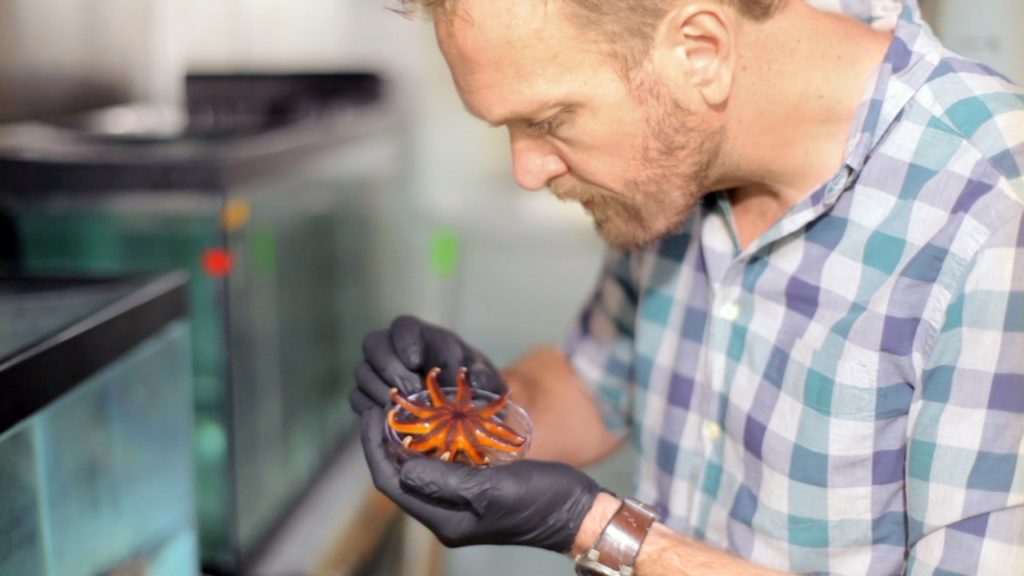Why do sea stars get sick? What does that mean for our oceans? Ocean Genome Legacy (OGL) is collecting samples to help solve these mysteries.
Last summer, students and scientists at the Northeastern University Marine Science Center noticed something odd about the local sea stars: the sickly stars were wasting away, and their limbs were falling off. It looked like this might be a case of sea star wasting disease, a plague that’s recently devastated sea stars in the Pacific Northwest. Sea stars are key predators of other invertebrates, so healthy sea stars are important for keeping marine ecosystems in balance.

To study what might be infecting Nahant’s sea stars, OGL scientists sent samples to Prof. Ian Hewson’s lab at Cornell University. Researchers used these samples to identify a new virus, which was genetically similar to the disease-causing virus from the Pacific coast. But does the new virus also cause disease? Or is it just a look-alike? The OGL samples will help develop new methods to identify and compare marine viruses worldwide, and hopefully inspire new ways to protect sea stars and their ecosystems.
The OGL biorepository works with scientists around the globe to preserve valuable DNA samples that may someday lead to new cures and discoveries. If you would like to support our efforts, please consider making a gift.
